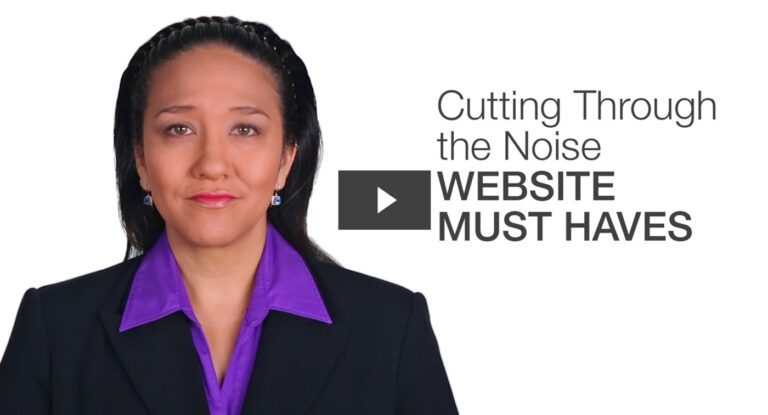“I can’t prove ROI from my website.” “I don’t have the technical skills required for a complete site rehaul.” “We don’t have the budget to update our website, it’s already live so why change it?” Sound familiar? There are lots of common objections to redesigning a company website, but incorporating an Inbound marketing strategy into a website restructuring can pay immense dividends down the road. Here are 10 reasons why.
- Prove ROI
Since we included this objection in the intro, let’s get it out of the way now. A website built with Inbound in mind uses quantifiable metrics to prove its value over time. The best way to approach this is to have a company like HubSpot host your site, so you can tap into their CRM. An Inbound website can and should be a dynamic, improving beast. Consider meeting with your development team once a month to discuss the current implementation of features and their associated conversions. With HubSpot or a similar platform, you’re able to more easily monitor the success of marketing elements on your website, which makes monthly improvements smooth and effective. With an inbound website model, you’ll always be monitoring data, so you’re aware of how your site’s performing—and proving that your changes are having an impact. Don’t be afraid to experiment!
- Stay ahead of the curve
Thinking of a website as a static tool is limiting and old-school. A dynamic website engages users and provides high quality and relevant content to their buyer’s journey. Did you know that 90% of buying decisions are influenced by visual factors? Including images provides an aesthetic aspect to the purchasing experience. Video is even better. (For video-hosting FAQ, check out this blog post.) Even if your site visitors aren’t ready to make a buying decision, their research into the product or service that they want will be enhanced by the content you provide on your site, and whether they realize it or not, they’ll appreciate the experience you are providing for them.
- Become automatic
A great site can augment your sales funnel and bridge the gap between your sales and marketing efforts, as well as increase your online presence through SEO. As previously stated, using a CRM and hosting platform like HubSpot gives you access to a plethora of sales and marketing tools. Marketing automation software tracks how each lead interacts with your website, so you can improve pages based on actual user behavior. Your calls-to-action and their associated landing pages provide insight to the best performing offers. With customized and personal offers, you are producing smart content that will be specific and relevant to your consumers.
- Invest in long-term value
When you think about a website redesign, you might be thinking only about the appearance of your website. But what about functionality? What about lead generation potential, and conversion opportunities? Unfortunately, it is all too common for businesses to focus solely on the aesthetics of the site during a redesign. While the aesthetics matter, they are only one part of a larger picture. Analytics, custom content, and engagement are also key aspects of a website redesign, but these changes don’t all need to come at once. With an inbound website, you don’t need to cram all your strategy for the year into one redesign—instead, you want to constantly be improving the site. You can generate more value by investing month-to-month in incremental changes, instead of one big website redesign cost up-front. According to the 2016 State of Inbound report, organizations with incremental strategy plans are 1.6X as likely to receive higher budgets.
- Find the right people, at the right time
Consider this: 79% of people considered “leads” never buy from a company. That’s a pretty insane disconnect. And it’s often due to lack of education and lead nurturing. The buyer’s journey consists of 3 stages: Awareness, Consideration, and Decision. Traditional outbound marketing focuses on only the last stage, without taking into account that so many site visitors are just looking for solutions to their pain points. That’s why it is important to use Inbound for your website: you aren’t pushing the final sell right away, but are instead making it easy for potential buyers to approach their problem on their own terms.
- Build trust, respect, and authority
In today’s interconnected world, accessibility to information has never been easier. That means that transparency in the business world is more important than ever. When you type keywords into a search engine, the most liked, shared, and talked about content tends to be highest on the results page. Having a beautiful and functional website is crucial, but you also need to be consistently producing content related to your industry. The goal of this ongoing content creation is to become an industry thought leader: a company that has established itself as a credible and reliable source of information in their field. Blogs, vlogs, and active social media presence all contribute to thought leadership. For an in-depth look at how video can work for thought leadership, check out this post.
- Work around the clock
Incorporating an Inbound strategy into your website redesign means working towards having your site be your 24/7 salesperson. As Kayli Kunkel puts it: “Your website must now be an online sales platform for your business—an integral part of marketing to prospects. If your website isn’t selling around the clock, you’re missing out on leads and revenue.” Marketing automation, as stated above, effectively helps with this. Another Inbound strategy to explore is A/B Testing. Change your CTAs every month or quarter to see what language, as well as content, is most beneficial to your visitors. By increasing your engagement, you’re increasing your online visibility which in turns lead to an increase in site traffic. Not only that, the quality of your leads will improve as well as the quantity.
- Amaze your audience
There are three responses to a piece of design—yes, no, and WOW! Wow is the one to aim for.—Milton Glaser
The easier your site is to use, the more time a visitor is likely to spend poking through it. And more clicks on the site means increased chances of purchasing! Steer clear of unnecessary clutter on any given page—don’t be afraid of white space. Use simple, elegant tabs that allow for easy navigation. Make the “About Us” and “Contact Us” sections visible, but not at the forefront. You want to entice your audience to contact you on their own, instead of forcing it on them. In the same vein, be wary of using pop-up ads or anything that might seem too intrusive to a casual visitor just looking for information. If you build it, they will come, and if you build it well, they will be amazed!
- Be discovered
You don’t need an enterprise-level budget to increase your SEO. There is much more to the Google-game than simply paying for the top ads. 93% of buying cycles start with an online search, so of course, SEO is vitally important for businesses looking to get found online. If you don’t rank well in search, it’s hard for people to find you. But Inbound is a methodology that works especially well with smaller businesses—a great site can be tiny but mighty. It’s better to keep it simple than to try and saturate your site with too many features and options.
- Beat your competitors
To be frank, Inbound isn’t just a fad—it’s here to stay. E-commerce has changed a lot in the last decade, and it’s crucial to keep up with the most effective (not to mention efficient) methods of attracting and retaining customers. 32% of surveyed brands are planning to cut down on outbound marketing costs and allocate more budget for Inbound Marketing.
The best brands are ones who stay consistent in their interactions online. Posting quality content and engaging with consumers through the site and social media all work in tandem with traditional sales and marketing efforts. Subscribe to our blog to stay up to date with the latest happening of inbound, marketing, sales, and all things digital.
Subscribe to our BLOG
Stay in touch & learn how to attract customers, become a thought leader, create effective marketing campaigns, & more.





